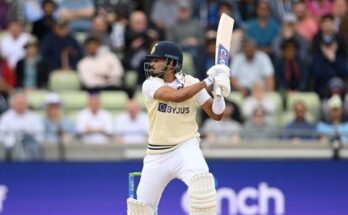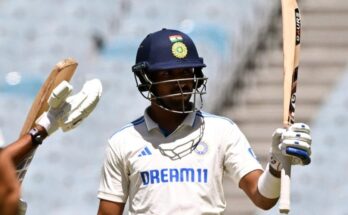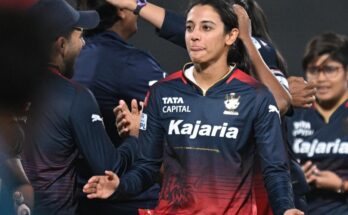With a first-class average of 44.54, Devdutt Padikkal has made it to the India Test squad: his selection follows a pattern.
When KL Rahul was ruled out of the third Test match against England, at Rajkot, India called up Devdutt Padikkal, who averages 44.54 for his 2,227 first-class runs. The number, while not ordinary in domestic cricket in some countries, is barely par level in Indian cricket.
Who were the other contenders?
Padikkal was called up ahead of, among others, India A captain Abhimanyu Easwaran (6,806 runs at 46.29), Rinku Singh (3,173 runs at 54.70), and Tilak Varma (951 runs at 50.05 along with part-time off-breaks). At face value, this may come across as an instinctive pick, but it is part of a chain of Indian selections that have followed a pattern.
Let us trace our steps to just before the England Test series, when Virat Kohli opted out of the first two Test matches (he has since pulled out of the rest of the series). The selectors picked 30-year-0ld Rajat Patidar, another batter with a first-class average in the mid-40s.
There was the usual furore over the omission of Sarfaraz Khan – understandably, perhaps, for his average has been flirting with the 70-mark for some time. Yet, Patidar’s selection was based on the tried-and-tested three-step method of domestic cricket, India A, Test squad.
Ahead of the three-match unofficial ‘Test’ series, Patidar made 111 against the England Lions. In the first ‘Test’, he made an astonishing 151 out of a total of 227, and was picked ahead of Sarfaraz the moment a place opened up.
It is important to trace the career of Sarfaraz, who averages a ridiculous 102.48 for Mumbai. Picked to play red-ball cricket for India A in 2021/22, he made 71 not out on debut – but that remained his highest score in his first nine matches. He averaged 36.60 at that level. One can see why the selectors chose Patidar ahead of him.
It was in the tenth match for India A that Sarfaraz finally found his mojo, with 161, and was immediately called up to the Test squad when Rahul sat out at Visakhapatnam with an injury. However, Patidar, already ahead in the pecking order, got the Test cap.
The call-up pattern
Padikkal’s call-up followed a similar pattern. He got 105 in the second ‘Test’, where Sarfaraz made 161, outscoring Easwaran’s 58. In the third, he made 65 (out of 192) and 21, while neither Easwaran nor Rinku got runs. Sai Sudharsan, who made 117 in the second innings, is perhaps the next in line.
To bolster his case, Padikkal made 151 and 36 against Tamil Nadu in the Ranji Trophy immediately after the ‘Test’ series against the England Lions got over. Sai Sudharsan did not play that match.
It is not just the batters who have been picked in this way. Immediately after Saurabh Kumar made 77 and claimed 5-104 against the Lions, the Indian selectors included him in the Test squad and released Avesh Khan. Akash Deep’s call-up came after he claimed 11 wickets in two Lions matches.
What is the big deal about India A?
The IPL provides the selectors with an excellent group of cricketers to pick the T20I squad from. The best in the league sometimes make it to the ODI side as well, but for Test cricket, India have followed a different path.
The Ranji Trophy is India’s premier competition. The Duleep Trophy and the Irani Cup serve as the bridge between the Ranji Trophy and the Test side – but that is on paper. In reality, the chasm between the two levels is vast, for few established Indian Test cricketers feature in these tournaments.
Since the second half of the previous decade, India A has served as an excellent stepping stone. Between February 2017 and February 2020, India A played 26 unofficial ‘Tests’. For perspective, the senior teams of New Zealand and West Indies played 25 Tests each over this period; Bangladesh 24; Pakistan 22; and Zimbabwe, Afghanistan, and Ireland 16 between them.
There was more to that, for the India A team got “the same facilities, the same level of training and physio support, same level of analysis, as the senior team”. There were also ‘shadow tours’: when India toured a nation, India A often did the same at roughly the same time.
On the 2018 tour of England with India A, Rishabh Pant had a run of 64 not out, 3, 67 not out, 58, and 61. When the Indian team needed a Test wicketkeeper, they first included Pant in the squad and picked him for the tour game against Essex, then gave him a Test cap.
But the more telling stories took place when India toured Australia in 2020/21, when one greenhorn cricketer after another had to be called up. These players, while uncapped, had plenty of near-top-level experience.
Mohammed Siraj and Shubman Gill both debuted in the second Test match of the series. By then, Siraj had 70 wickets for India A at 21.88 apiece, while Gill’s 970 runs had come at 88.18. They were ready.
The interim period
Covid-19 had put India A matches on a hold for a while. They did not play a single match between February 2020 and November 2021. They have played 12 ‘Tests’ since then, but five of them have been over the last two months. A significant drop from 26 in three years.
In the interim period, India have needed four ‘emergency’ cricketers. When injuries kept Rohit Sharma and Rahul out of the Edgbaston Test match of 2022, they recalled Cheteshwar Pujara, who had been doing well in the County Championship, and pushed him to the top.
Pant’s horrific accident ruled him out of the 2022/23 home series against Australia, India drafted in KS Bharat, India A wicketkeeper since 2018 and reserve gloveman of the Test squad since Wriddhiman Saha was phased out.
Shreyas Iyer missed the Ahmedabad Test match of the same series and the World Test Championship final. India picked Suryakumar Yadav and Ajinkya Rahane, based on Twenty20 form – for they knew these were going to be stopgap arrangements. Neither is in Test contention at this point.
Now that India A matches are played at familiar frequency, the level is almost certainly being looked at the intermediate step yet again.
Subscribe to the Wisden Cricket YouTube channel for post-match analysis, player interviews, and much more.



